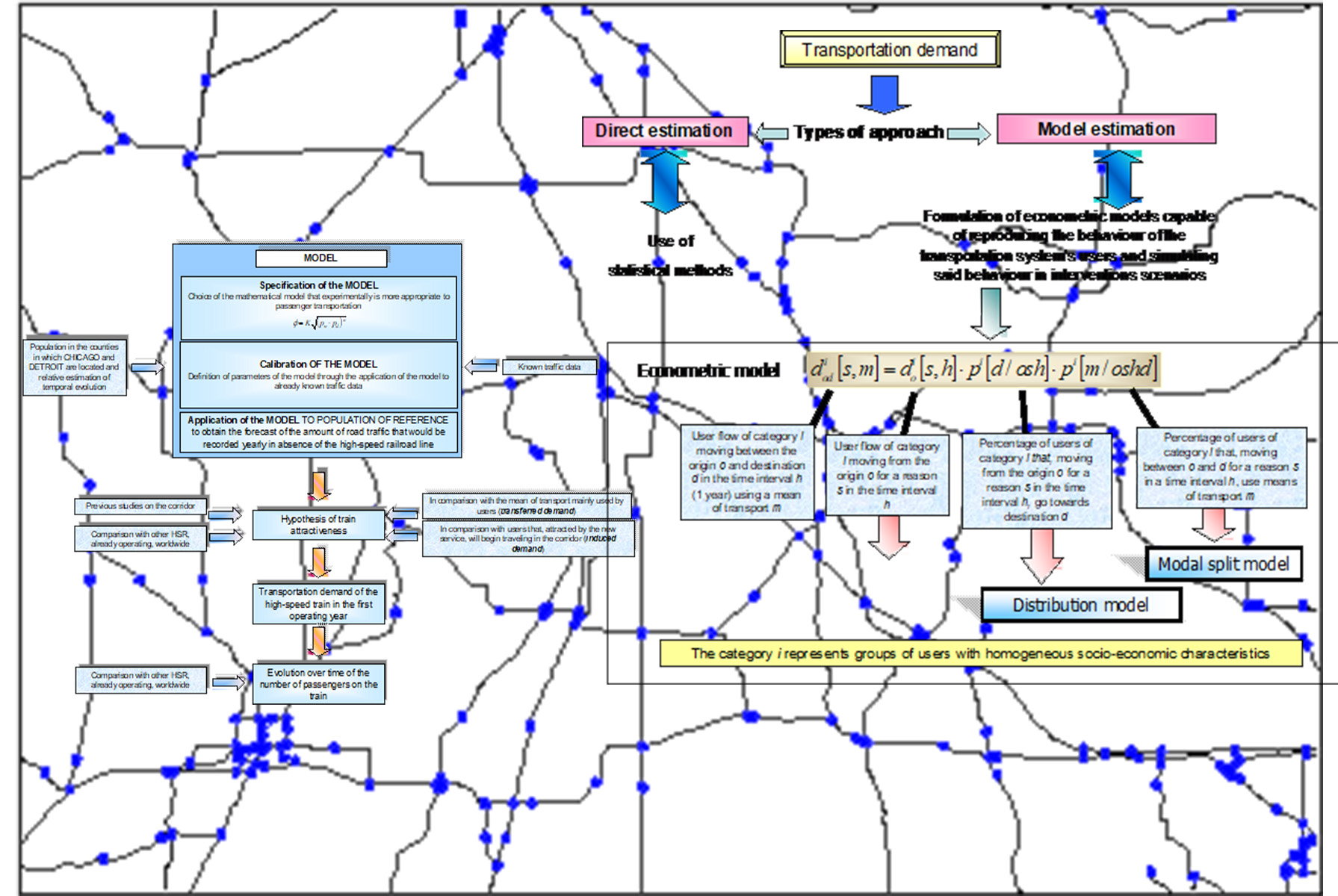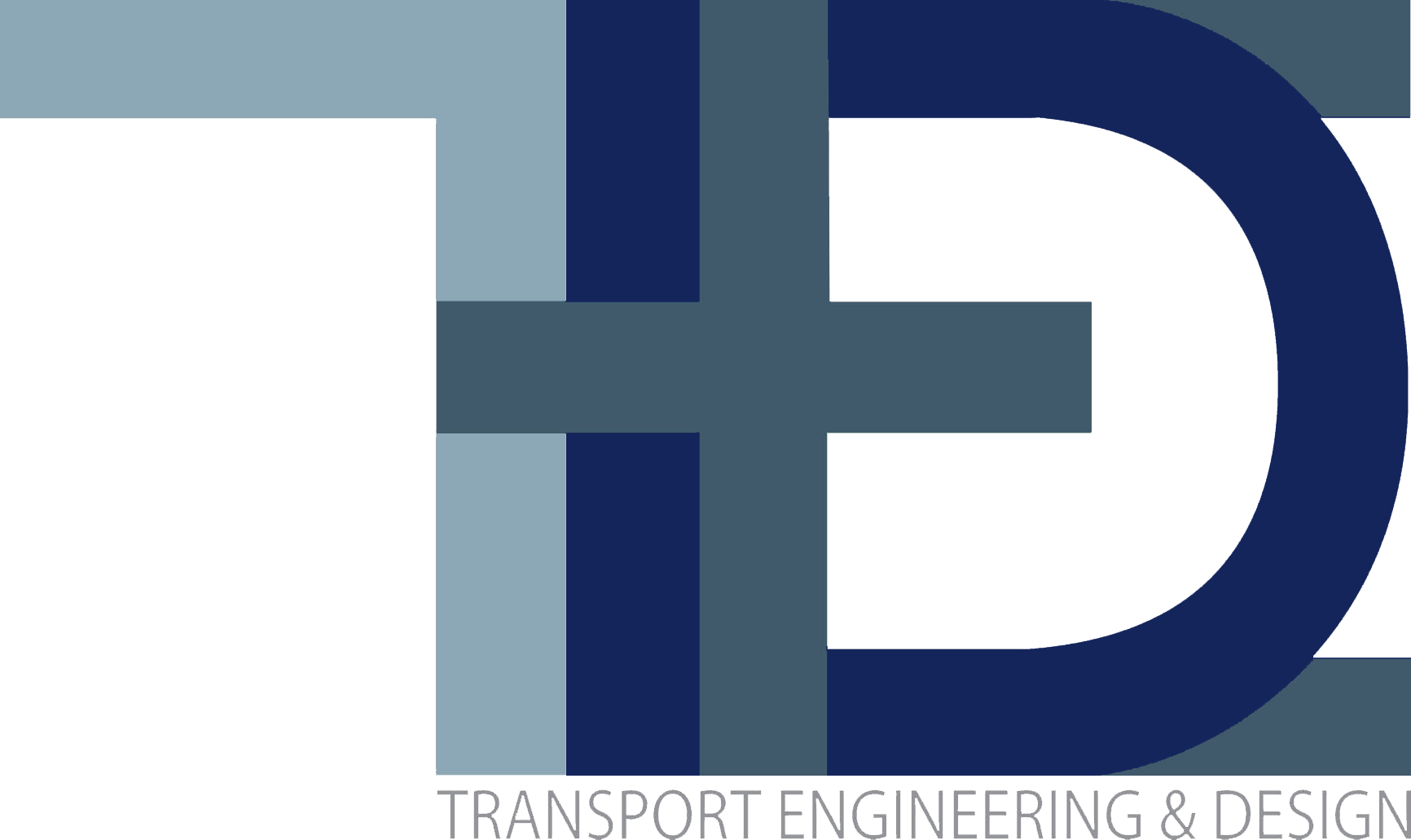Preliminary Projects Design and Evaluation
A key feature of our work is our multidisciplinary design approach. Based on an integrated vision, we are constantly engaged in seeking out state-of-the-art infrastructure and technology solutions to deliver the highest standards in terms of performance, safety, reliability and responsiveness.
We are involved in all aspects of projects, both in the design and development of new lines and in the modernisation and upgrading of existing links, meeting the highest technical standards and the most stringent environmental requirements.
Our experienced Staff is uniquely trained and qualified, and has a broad background in areas such as railroads and highways design, signals and communications, tunnels design, civil and geotechnical works, intermodal facilities, bridges and structures design, steel, reinforced concrete and prestressed concrete structures, transit facilities design, assessments, hydrology/hydraulics analysis, utility design, traffic control plans and environmental assessment that are incorporated into our project planning process.
We provide engineering and project design for all aspects of transport infrastructure, systems, and communications.
The preliminary design phase involves developing the engineering design and evaluation in collaboration with the various functional disciplines including right-of-way, surveys and mapping, environment, safety, railroads and highways design, pavements, hydraulics, geotechnical, structural design, to support the identification of a preferred alternative and the decision-making process as described in Code of Federal Regulations (CFR) Title 23 section 636.103. This phase may include developing multiple alignment configurations, railroads and roadways templates, pavement structures, roadside features or other alternatives for evaluation.
The preliminary design is typically developed to approximately the 30 percent level of design detail using substantial additional engineering data, information and input to supplement the information gathered during the conceptual studies phase. This phase typically includes identification of a detailed scope of engineering activities, estimated costs, and a project delivery plan for implementing the proposed project and achieving the project objectives on schedule and within budget.
Specific services for all rail and road modes include:
Economic Analysis of Rail Infrastructures and Systems
Our team has deep experience in the assessment and planning of the conditions that characterize an optimal infrastructure investment program, emphasizing the need to extend project-based microeconomic cost-benefit analysis to incorporate the value of economy-wide macroeconomic and other externalities.
See more detailed information:
- - Cost-Benefit Analysis
Our team's experts provide Costs and Benefits Analysis determining the value of a project in relative terms. Project justification is measured as economic worth to the community comparing the benefit with the overall cost, to deliver and sustain the project in order to demonstrate if it can be considered economically viable. CBA is executed and conducted in accordance with the benefit-cost methodology as recommended by USDOT, in the Benefit-Cost Analysis Guidance, and by European Commission in the Guide to Cost-Benefit Analysis of Investment Projects.
- - Economic and Financial Analysis
Our team provide Economic analysis of a comprehensive project or program evaluation methodology that considers all key quantitative and qualitative impacts of transport investments. It allows to identify, quantify, and value the economic benefits and costs of projects and programs over a multiyear timeframe. Through a proper Financial Analysis our team can calculate the incentives for the main stakeholders, checks the solvency and longer-term sustainability of the project, and helps to design possible cost recovery mechanisms.
- - Cost Estimations
Cost estimates may be required at early projects stages, before completion of a detailed design for several purposes including budgeting and feasibility decisions. Predesign cost estimates are determined by parametric modeling technique during these early project stages, as detailed cost estimation cannot be performed yet. The data is used to model the variations in project costs using parametric modeling. Regression analysis is implemented for quantification of the impacts of parameters on the cost.
- - Construction Costs in Railroad Projects
Our team's experts assess and elaborate proper Construction Costs Analysis and Reports strictly connected to the level of detailes of the engineering project taking in consideration both Capital Costs
 land acquisition;
land acquisition; civil works also including tunnelling and bridgework;
civil works also including tunnelling and bridgework; electric power and control systems, signaling and rolling stock.
electric power and control systems, signaling and rolling stock.and O&M Costs
 train crews;
train crews; electric energy consumption;
electric energy consumption; rolling stock maintenance;
rolling stock maintenance; infrastructure maintenance (fixed and variable elements);
infrastructure maintenance (fixed and variable elements); station and train control staff.
station and train control staff.
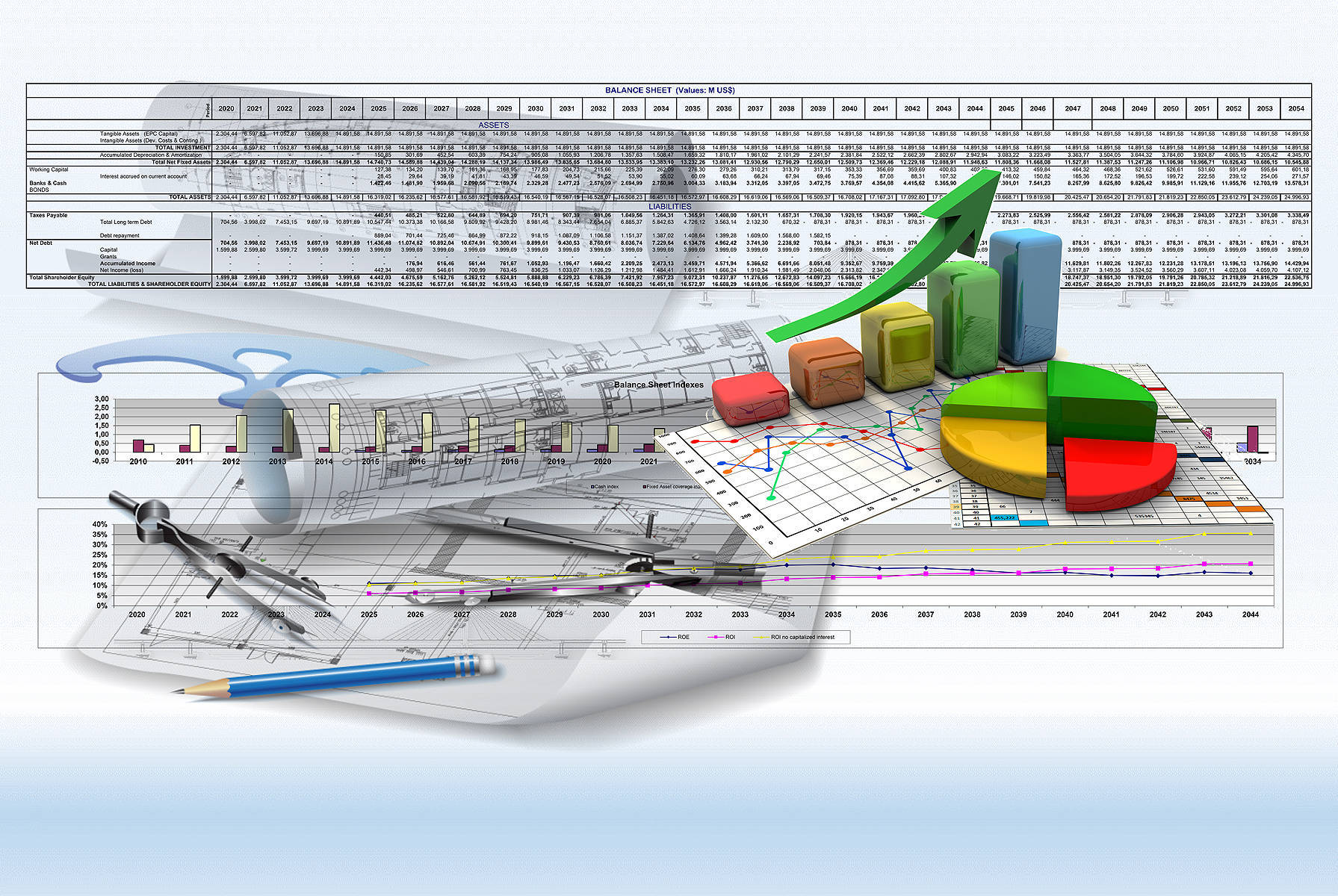
Environment
Environmental questions must be a natural part of road and rail planning in order to achieve sustainability over the long term.
TED's team offers a range of environmental services to complement our development planning, highway and infrastructure design skills.
We assess and report on environmental impacts of development related transport in accordance with the National Environmental Policy Act of 1969 (NEPA) and its implementing regulations (40 Code of Federal Regulations CFR Parts 1500-1508), with the Council on Environmental Quality (CEQ) regulations, or the EU directive on the assessment of the impacts of public and private projects on the environment (Directive 85/337/EEG).
See more detailed information:
-
- EIS- Environment Impact Statement
Ted provide EIS reports (both Draft EIS and Final EIS) which describes and summarizes the potentials environmental, transportation, and socio-economic effects of a No Build or Build of different Corridor Alternatives for new road, rail and high-speed projects on the population and natural environments within the Project Study Area.
Other environmental review requirements are implemented to the fullest extent possible, namely, floodplains and wetlands assessments and threatened and endangered species assessments.
- - Noise and Vibration Impact Analysis
Noise and vibration are sometimes among the major concerns regarding the effects of a transit project on the surrounding community and are key elements of the environmental impact assessment process for public transportation projects. A transit system is often placed near population centers by necessity and may cause noise and vibration at nearby residences and other sensitive types of land use.
Our team's experts assess and elaborate proper Noise and Vibration Impact Analysis connected to the level of environmental analysis and review based on the significance of any potential associated environmental impacts and on the scope and complexity of the proposed project.
The goals of a transit noise and vibration impact assessment are to:
 determine existing noise and vibration levels;
determine existing noise and vibration levels; assess project noise and vibration for potential impact;
assess project noise and vibration for potential impact; evaluate the effect of mitigation options on impacts.
evaluate the effect of mitigation options on impacts. - - Hazard Analysis
TED's team prepares hazard analyses to assist local authorities in developing a safe and secure transit system. Reports provided discuss safety critical systems and subsystems, types of hazard analysis, identification, elimination, and/or control hazards.
The primary purpose is to identify and describe hazards that might arise from flaws and fault conditions in the design and operation of a system or subsystem.
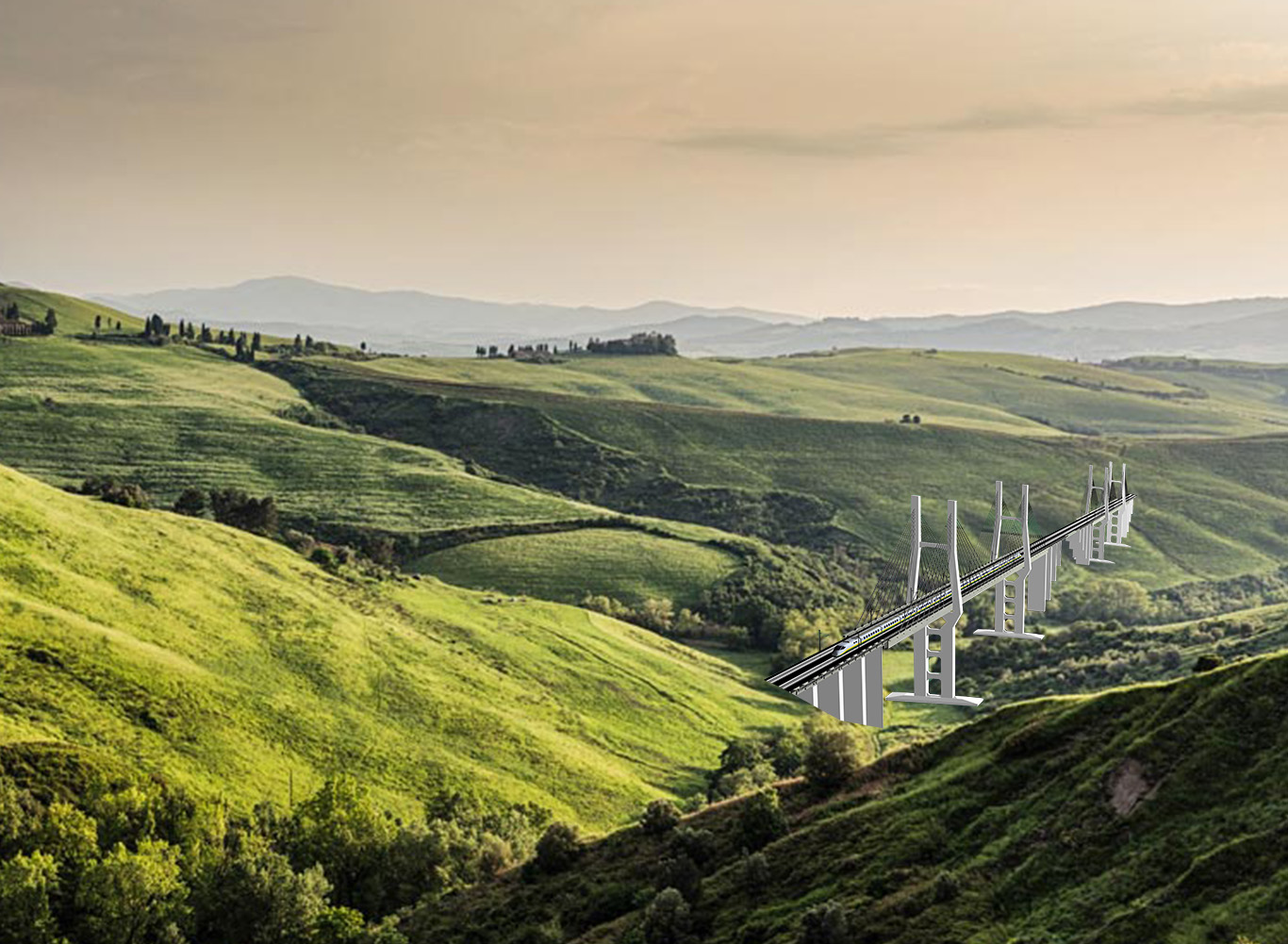
Geology and Hydrogeology
The impacts on geology and hydrogeology arising from a proposed project are concerned with the description of the geological and hydrogeological character of the interest area.
The potential impacts on the ground conditions and on the existing soil, geology and groundwater conditions are considered for both the different design phases, construction and operational phases of the proposed project.
See more detailed information:
- - Geological Reports & Surveys
TED's team provides of Geological Analysis and Surveys.
The geologic and seismic hazards need to be identified and evaluated to assess their potential impact on the design, construction, and operation of the Conventional and High-Speed Railroads. In some instances, these hazards will have significant impact on the design, construction, and/or operation of conventional or high-speed railroads and therefore will require mitigation measures that may be achieved through avoidance and/or design modifications. Hazardous minerals are unique to these other hazards in that they do not affect the operation of the conventional or high-speed railroads but may influence construction.
Following are design considerations related to the geologic and seismic hazards analyzed by TED. In general, these include the input to the design of system elements to accommodate or mitigate:
 Surface rupture along hazardous faults;
Surface rupture along hazardous faults; Liquefaction and other seismically induced ground deformation;
Liquefaction and other seismically induced ground deformation; Static and seismically triggered and slope stability;
Static and seismically triggered and slope stability; Karst terrain and abandoned mines;
Karst terrain and abandoned mines; Erosion;
Erosion; Land subsidence;
Land subsidence; Collapsible soils;
Collapsible soils; Expansive soils;
Expansive soils; Hazardous minerals;
Hazardous minerals;TED also analyzes other geologic and seismic hazards such as potential seismically induced lateral spreading and ground cracking may exist along rail segments or facilities and shall be identified and evaluated to assess significance to the rail system and/or its components.
- - Hydrogeological Reports & Surveys
TED's team provides assessment of the environmental setting of the proposed transports project in terms of hydrology and hydrogeology and value the potential impacts that the construction and operation of the proposed transports project will have, including the analysis of appropriate mitigation measures to limit any identified significant impacts to water.
The objectives of the assessment are:
 produce a baseline study of the existing water environment (surface water and groundwater including connectivity with local designated sites) in the area of the proposed project site;
produce a baseline study of the existing water environment (surface water and groundwater including connectivity with local designated sites) in the area of the proposed project site; identify likely negative impacts of the proposed project on surface water and groundwater during construction and operational phases of the project;
identify likely negative impacts of the proposed project on surface water and groundwater during construction and operational phases of the project; identify mitigation measures to avoid, remediate or reduce significant negative effects; and,
identify mitigation measures to avoid, remediate or reduce significant negative effects; and, assess significant residual effects and cumulative impacts of the proposed project along with other local infrastructural project.
assess significant residual effects and cumulative impacts of the proposed project along with other local infrastructural project. - - Hydraulics Reports & Surveys
TED's team provides of hydraulic analysis and value the potential impacts that the construction and operation of the proposed transports project will have of the environment, including hydraulic facility design will address the following:
 Culvert design;
Culvert design; Open channel design;
Open channel design; Bridge drainage design;
Bridge drainage design; Underdrain system design;
Underdrain system design; Roadway drainage design;
Roadway drainage design; Tunnel drainage system design;
Tunnel drainage system design; Trench drainage system design;
Trench drainage system design; Pump stations;
Pump stations; Debris control;
Debris control; Siphons;
Siphons; Energy Dissipators;
Energy Dissipators; - - Geotechnical Investigations
TED's team provides of Geotechnical Analysis and Investigations.
In order to provide a consistent and dependable design, TED use a standardized investigation approach, as well as reporting and documentation practices and procedures across all project segments. Uniformity and consistency for geotechnical investigation methods and documents facilitate sharing among technical and design teams throughout the design and construction stages of the project. The geotechnical investigations and reports are prepared by knowledgeable personnel with considerable experience in geotechnical, geological, design, and construction field, relevant to the project.
Geotechnical investigation performed by TED include:
 Field preparation (work plans, permits, etc.);
Field preparation (work plans, permits, etc.); Field exploration;
Field exploration; Laboratory testing;
Laboratory testing; Report documents;
Report documents;The generals basis for the design developed by TED follow the best practices of the European Technical Specifications for Interoperability (TSI), European Standards Eurocodes as well as the American best practices as there guide of the Manual of Railway Engineering of the American Railway Engineering and Maintenance-of-Way Association (AREMA), American Society of Civil Engineers (ASCE), American Association of State Highway, and Transportation Officials (AASHTO); American Society for Testing and Materials (ASTM); Federal Highway Administration (FHWA); United States Geological Survey (USGS); U.S. Army Corps of Engineers (USACE), and other locals standards, codes and guidelines.

Infrastructure
The infrastructure required to meet a lot of challenges and for that reason these are subsequently becoming more complex, calling for an innovative approach to provide truly integrated railway design, reducing the impact that design might have on networks and the environment.
Civil constructions are increasingly playing an important role in rail projects representing more then 50-60% of a comprehensive construction costs.
See more detailed information:
- - Alignment Plans
TED defines the most suitable geometric design in basic design in order to achieve a safe and reliable operating railway.
The general basis for the adopted alignment design follow the best practices of the UIC (International Union of Railways), for railway lines, even considering European Technical Specifications for Interoperability (TSI), American best practices and the Manual of Railway Engineering issued by American Railway Engineering and Maintenance-of-Way Association (AREMA).
- - Earthworks
The general basis of earthworks design performed by TED follow best practices currently used in railroad systems design, such as European Technical Specifications for Interoperability (TSI); best American practices such as the Manual of Railway Engineering issued by the American Railway Engineering and Maintenance of Way Association (AREMA); U.S. Army Corp of Engineers (USACE) - Technical and Design Guides; American Association of State Highway and Transportation Officials (AASHTO) and other locals standard.
The earth structures are designed with the highest geometrical accuracy in order to ensure the maximum stability of the track. These earth structures shall also be able to support the heavy dynamic load and the high level of vibration due to high-speed trains.
- - Bridges and Viaducts
TED design aerial structures such as Concrete and Steel Bridges, Concrete and Steel Arch Bridges, Cable-Stayed Bridges and Concrete and Steel Viaducts.
Design elements that are required for conventional or high-speed rail construction are identified, by TED, through basic structural design parameters which including material type selection, construction options, span length and span depth ratio.
TED's design parameters for aerial structures:
 Structural Performance: accomplishment of superstructure and substructure design to ensure compliance with stringent project specific design criteria, including seismic resistance, fatigue resistance, reliability in train operation and passenger comfort issues. Design's choices also take into account the easiness of repair in case of seismic events and collision damage protection to allow a quick resumption of service.
Structural Performance: accomplishment of superstructure and substructure design to ensure compliance with stringent project specific design criteria, including seismic resistance, fatigue resistance, reliability in train operation and passenger comfort issues. Design's choices also take into account the easiness of repair in case of seismic events and collision damage protection to allow a quick resumption of service. Functionality: comply train run functionality and track bed support, preserving also the electrification clearance requirements for traction power supply and distribution, communications, train control, as well as foresee space for sidewalks, duct banks, sound walls, and drainage.
Functionality: comply train run functionality and track bed support, preserving also the electrification clearance requirements for traction power supply and distribution, communications, train control, as well as foresee space for sidewalks, duct banks, sound walls, and drainage. Safety: at least no structural failure criteria in the event of extreme seismic events, continuation of safe operation of conventional and high-speed trains after a seismic event and ability to perform required service, inspection and maintenance operations during routine and emergency conditions.
Safety: at least no structural failure criteria in the event of extreme seismic events, continuation of safe operation of conventional and high-speed trains after a seismic event and ability to perform required service, inspection and maintenance operations during routine and emergency conditions. Serviceability: easiness of routine inspections, maintenance and repairs.
Serviceability: easiness of routine inspections, maintenance and repairs. Economy: Realization of cost efficiency based upon scale economy, easiness and speed in construction, use of prefabricated segments or rolling forms in standard superstructure cross sections.
Economy: Realization of cost efficiency based upon scale economy, easiness and speed in construction, use of prefabricated segments or rolling forms in standard superstructure cross sections. Trackside Environment: Attenuation of noise and vibrations, reduction of visual impacts and shadows, maintaining the required access to the property and promoting an appropriate aesthetic with the surrounding environment.
Trackside Environment: Attenuation of noise and vibrations, reduction of visual impacts and shadows, maintaining the required access to the property and promoting an appropriate aesthetic with the surrounding environment.The integral design is created by a team of specialists in a three-dimensional model, often using a BIM model (Building Information Model).
The generals basis for the design developed by TED follow the best practices of the European Technical Specifications for Interoperability (TSI), European Standards Eurocodes (0 to 9) as well as the American best practices as there guide of the Manual of Railway Engineering of the American Railway Engineering and Maintenance-of-Way Association (AREMA), American Society of Civil Engineers (ASCE) - Codes and Guidelines, American Association of State Highway, and Transportation Officials (AASHTO) - Standard Specifications for Highway Bridges and Bridge Welding Code, American Concrete Institute (ACI) - Building Code Requirements for Reinforced Concrete, American Institute of Steel Construction (AISC) - Steel Construction Manual; and other locals standard.
- - Geotechnical Structures
Investigation, design, project management and supervision for underground projects are by performed by TED.
TED performed slope stability analysis and remediation, basic seismic evaluations of slope stability, lateral earth pressures, and liquefaction, and design pile foundations, shallow and deep foundations, earth retaining structures.
- - Tunnels
TED design railroad tunnels (Bored, Cut-and-cover and Jacked) using conventional (NATM) or mechanical (TBM) tunneling methods following best practices currently used on the design of railroad tunnels, such as European Technical Specifications for Interoperability (TSI) and best American practices as the Manual of Railway Engineering of the American Railway Engineering and Maintenance of Way Association (AREMA), Federal Transit Administration (FTA) - Guidelines for Rail Tunnel Design, Construction, Maintenance, and Rehabilitation, American Association of State Highway, and Transportation Officials (AASHTO) - Road Tunnel Design and Construction Guide Specifications , National Fire Protection Association (NFPA) - 130 and 502, National Cooperative Highway Research Program (NCHRP) standards and guidelines and other locals standard.
TED performs aerodynamic and ventilation simulations through Computational Fluid Dynamics (CFD) modeling.
- - Hydraulic and Drainage
TED design railroads drainage such as culvert, highway drainage, bridge drainage, storm water drainage, storage facility, pump station, channel work and other hydraulic structures.
- - Pavement Design
Ted provide Pavement Design in Rail and Road Construction and especially in application of bituminous track beds for the high-speed rail networks.
- - Intrusion Protection
TED design intrusion protection systems required for conventional passenger railroad lines, High-Speed railroad lines and freight railroad lines.
Identify intrusion hazards in shared rights-of-way is a key safety issue for existing transportation systems. Reduce intrusion risk will allow high-speed lines to operate adjacent to existing transportation systems in a safe and acceptable manner.
The general basis for the design developed by TED follow the best practices of the UIC (International Union of Railways), for railway lines, even considering European Technical Specifications for Interoperability (TSI) as well as the American best practices as the Manual of Railway Engineering of the American Railway Engineering and Maintenance-of-Way Association (AREMA), Federal Railroad Administration (FRA) guidelines regarding the separation and protection of adjacent transportation systems and conventional railroads and Code of Federal Regulations (CFR) parts 213-214.
- - Infrastructure’s Interference
The design of new railway lines inevitably leads to interferences with natural gas pipelines, Petroleum pipelines, Crude Oil pipelines, Power lines, Water lines, Sewer lines, Telephone or fiber optic lines and other aerial and underground utilities.
Further significant interferences are due to proximity towards airports and others large transport infrastructure.
TED plans rail crossings according to international best practices, with particular reference to the standards and guidelines of the American Railway Engineering and Maintenance-of-Way Association (AREMA), Pipeline and Hazardous Materials Safety Administration (PHMSA), American Petroleum Institute (API), Gas Research Institute (GRI), National Electrical Safety Code and Federal Aviation Administration (FAA) - Airport Design.
- - Stations and Terminal Stations
Train passenger stations fulfill multiple roles. Stations must provide the required functional services for the train systems, accommodate the needs of passengers, and support the administrative requirements for train operations.
Safe, secure, and comfortable stations that are of high quality promote and encourage ridership are an important part of design developed by TED.
The generals basis for the design developed by TED follow the best practices of the European Technical Specifications for Interoperability (TSI) as well as the American best practices as there guide of the Manual of Railway Engineering of the American Railway Engineering and Maintenance-of-Way Association (AREMA), Americans with Disabilities Act (ADA), ADA Accessibility Guidelines for Buildings and Facilities (ADAAG), National Fire Protection Association (NFPA) - Codes and Guidelines, Code of Federal Regulations (CFR) 49 CFR 200 Series as specified in FRA Railroad Safety Regulations and other locals standard.
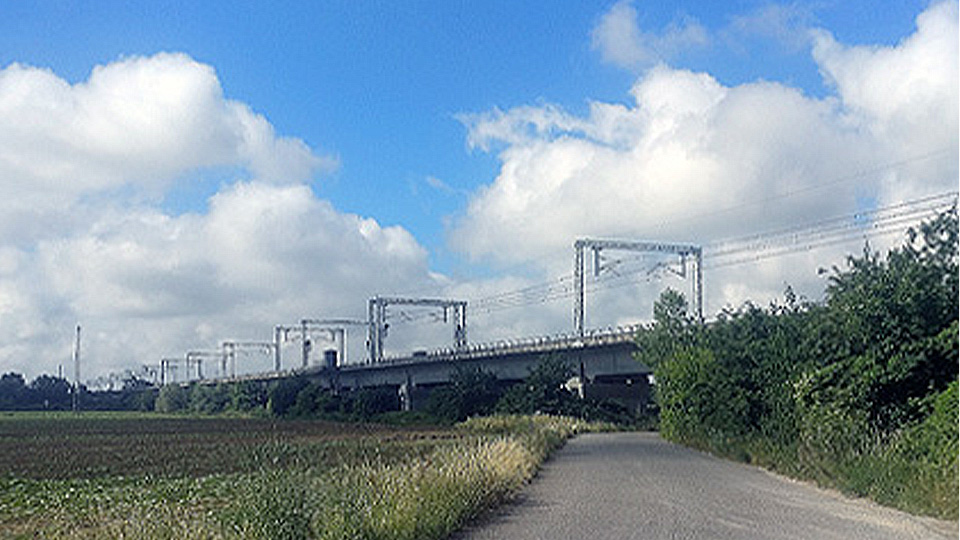
O&M Facilities
Effective operations and maintenance in railways is increasingly recognized as essential in providing safe and efficient transportation systems.
Planning operations and maintenance efficiently can optimize the reliability and productivity of existing rail networks, as well as maximizing the effectiveness of investments in new systems.
With our building design expertise and understanding of railway operations and maintenance processes, we ensure facilities are efficient and promote sustainability while minimizing neighbourhood impacts.
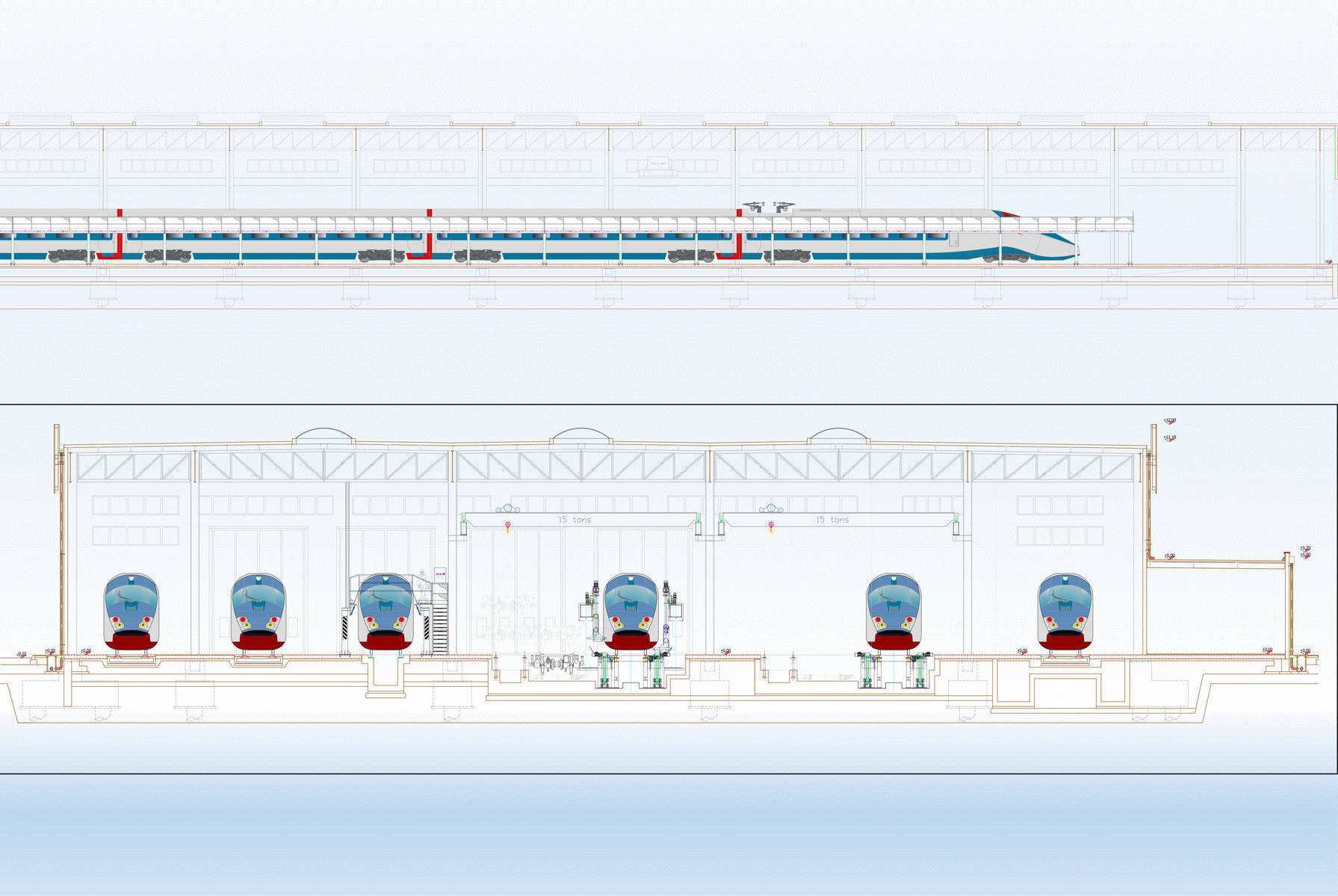
Systems
Railway systems require overall design to realize mobility systems that can be available, affordable, reliable and safe based on the cooperation between the railway system sectors: Rolling Stock, Train Track Interaction, Track and Structure, Energy Management and Control Command Signaling and Operations.
See more detailed information:
- - Permanent Way
A railway track is considered as the basic element of railway infrastructure. It provides a supportive platform to transfer train loads to the ground. There are two main systems of railway tracks; ballasted and ballastless systems.
TED design Ballasted Track and Non Ballasted Track (Slab Track) for Conventional and High Speed Railroads.
The generals basis for the design developed by TED follow the best practices of the UIC (International Union of Railways), for the railway lines, even considering European Technical Specifications for Interoperability (TSI) as well as American best practices as the Manual of Railway Engineering of the American Railway Engineering and Maintenance-of-Way Association (AREMA), Code of Federal Regulations (CFR), Federal Railroad Administration (FRA), American Society for Testing and Materials (ASTM), American Institute of Steel Construction (AISC) and other local Standard, Codes and Guidelines.
- - Traction Electric Systems
TED design Traction Electrification Systems at 1.5 kV DC, 3 kV DC and 25 kV AC.
The generals basis for the design developed by TED follow the best practices of the UIC (International Union of Railways), for the railway lines, even considering European Technical Specifications for Interoperability (TSI) as well as American best practices as the Manual of Railway Engineering of the American Railway Engineering and Maintenance-of-Way Association (AREMA), Federal Railroad Administration (FRA), National Electrical Safety Code (NESC), Institute of Electrical and Electronics Engineers (IEEE), National Fire Protection Association (NFPA), American Society for Testing and Materials (ASTM), American Institute of Steel Construction (AISC) and other local Standard, Codes and Guidelines.
TED also provide criteria for the traction electrification system (TES) grounding and bonding requirements and for protection against electric shock of the Conventional and High Speed Trains in order to:
 Provide a general system description and define the general topics of the TES grounding and bonding requirements and provisions for protection against electric shock;
Provide a general system description and define the general topics of the TES grounding and bonding requirements and provisions for protection against electric shock;  Define the traction power supply system (TPS) general grounding and bonding requirements;
Define the traction power supply system (TPS) general grounding and bonding requirements; Define the overhead contact system (OCS) general grounding and bonding requirements;
Define the overhead contact system (OCS) general grounding and bonding requirements; Define the passenger station platform grounding and bonding requirements;
Define the passenger station platform grounding and bonding requirements;  Define the structure grounding and bonding requirements;
Define the structure grounding and bonding requirements; Define the overhead bridge protection and bonding requirements;
Define the overhead bridge protection and bonding requirements; Define the requirements for protection against electric shock;
Define the requirements for protection against electric shock; Provide the summary and design criteria for TES grounding and bonding requirements;
Provide the summary and design criteria for TES grounding and bonding requirements; Provide the summary and design criteria for TES provisions for protection against electric shock.
Provide the summary and design criteria for TES provisions for protection against electric shock.In particular for the overhead contact system (OCS):
 Provide a general system description and define the general performance requirements of the overhead contact system;
Provide a general system description and define the general performance requirements of the overhead contact system;  Define the overhead contact system performance requirements;
Define the overhead contact system performance requirements; Provide a general detailed description of the overhead contact system;
Provide a general detailed description of the overhead contact system; Define the environmental requirements and climatic conditions applicable to the overhead contact system;
Define the environmental requirements and climatic conditions applicable to the overhead contact system; Define the electrical requirements including the electrical clearances applicable to the overhead contact system;
Define the electrical requirements including the electrical clearances applicable to the overhead contact system; Define the overhead contact system mechanical requirements;
Define the overhead contact system mechanical requirements; Define the overhead contact system structural requirements;
Define the overhead contact system structural requirements; Define the grounding and bonding requirements applicable to overhead contact system;
Define the grounding and bonding requirements applicable to overhead contact system; Define the overhead contact system requirements in order to be adequately implemented in the design, procurement, construction and testing processes;
Define the overhead contact system requirements in order to be adequately implemented in the design, procurement, construction and testing processes; Define the requirements applicable for the execution of the design, construction, testing and commissioning of the overhead contact system.
Define the requirements applicable for the execution of the design, construction, testing and commissioning of the overhead contact system. - - Traction Electric Substations
TED design Traction Electric Substation (ES) for systems at 1.5 kV DC, 3 kV DC and 25 kV AC, and performs traction power simulations in different system scenarios in order to verify the ability of traction power systems to allow trains traveling up to 3 minutes ones from each other, under normal condition and in scenarios of substation failure.
TED design other traction power facility like Paralleling Stations (PS) that contains an autotransformer which helps support the OCS voltage in the electrified system and Switching Stations (SWS) that are traction power facilities required to be located approximately mid-way between Traction Electric Substations in order to split the electrical sections.
TED performing Electric and Magnetic Field (EMF) simulations for ES, PS and SWS.
The generals basis for the design developed by TED follow the best practices of the UIC (International Union of Railways), for the railway lines, even considering European Technical Specifications for Interoperability (TSI) as well as American best practices as the Manual of Railway Engineering of the American Railway Engineering and Maintenance-of-Way Association (AREMA), National Electrical Safety Code (NESC), Institute of Electrical and Electronics Engineers (IEEE), National Fire Protection Association (NFPA), American Society of Civil Engineers (ASCE), American Institute of Steel Construction (AISC), American National Standards Institute (ANSI) and other local Standard, Codes and Guidelines.
- - Power Lines
TED design Electrical Transmission Lines at 120/132/138 and 220 kV and Electric and Magnetic Field (EMF) simulations associated with the use of electric power.
The generals basis for the design developed by TED follow the European best practices as the European Committee for Electrotechnical Standardization (CENELEC), as well as American best practices as the National Electrical Safety Code (NESC), Institute of Electrical and Electronics Engineers (IEEE), American Society of Civil Engineers (ASCE), American Institute of Steel Construction (AISC), American National Standards Institute (ANSI) and other local Standard, Codes and Guidelines.
- - Signaling & Communication Systems
TED design systems of Automatic Train Control (ATC), systems that provide:
 Automatic Train Protection (ATP) functions of train detection, collision and overspeed prevention, broken rail detection, interlocking control, hazard detection, train separation, and work zone protection;
Automatic Train Protection (ATP) functions of train detection, collision and overspeed prevention, broken rail detection, interlocking control, hazard detection, train separation, and work zone protection;  Automatic Train Operation (ATO) information and control functions;
Automatic Train Operation (ATO) information and control functions;  Automatic Train Supervision (ATS) functions to provide central supervisors with status information and the ability to control train operations.
Automatic Train Supervision (ATS) functions to provide central supervisors with status information and the ability to control train operations.This design is based in European Technical Specifications for Interoperability (TSI) and specifically at the European Rail Traffic Management System (ERTMS) and European Train Control System (ETCS).
TED designs railway communication systems based in European GSM-R System.
The generals basis for the design developed by TED follow the best practices of the UIC (International Union of Railways), for the railway lines, even considering European Technical Specifications for Interoperability (TSI).
TED also provide criteria for the:
 Identification and description of site location and communication system equipment required for conventional and high-speed railways;
Identification and description of site location and communication system equipment required for conventional and high-speed railways; Identification of communication industry standards for site equipment design and layout;
Identification of communication industry standards for site equipment design and layout; description of foreseen systems equipment and interfaces based on current industry best practices that will be applied in planned railway alignments;
description of foreseen systems equipment and interfaces based on current industry best practices that will be applied in planned railway alignments; Radio Frequency Propagation Simulations.
Radio Frequency Propagation Simulations. - - Electrical Installations
- - Technological Systems
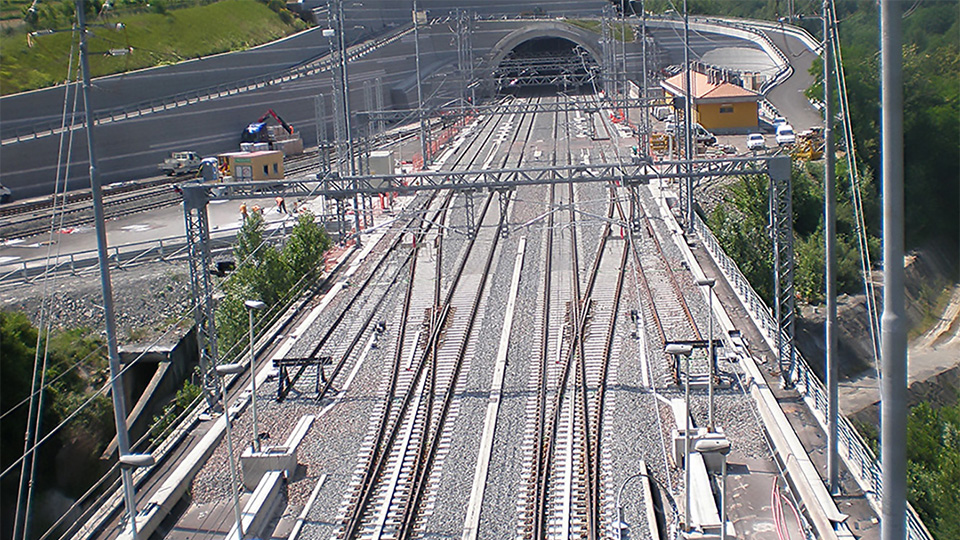
Railroad Corridors Capacity & Service Plans
Railway capacity is the ability of a railway to carry a certain number of trains in one direction on one track over a certain period. It is determined by how many trains you can run on a track in this direction in an hour and is expressed as trains per hour (tph).
Line capacity depends on train performance, particularly acceleration and braking, length and how trains are controlled, the infrastructure – the power available, the maximum line speed, the station spacing, the terminal design, gradients and the railway control (signaling) systems and the operating conditions.
The efficient use of rolling stock, considering all necessary regulations and practical constraints, is an important objective pursued in a railway companies.
Daily rolling stock assignment - service plans - assigns appropriate equipment to cover a given set of utilization paths in the utilization schedules while considering practical requirements, such as maintenance, depots capacity, and circulation rules.

Transportation Demand
A transportation system can be defined as a series of components, and their reciprocal interactions, that determine the demand for travel between various points of the territory and the transportation services offered in order to satisfy said demand.
The demand is given by the users that make “mobility choices” and “trip choices” to carry out activities in various places. The demand also depends on the transportation offer, that is to say on the alternatives that the transportation network offers.
The link between personal preferences, consumption, and the demand curve is one of the most complex relations in economics.
TED's Team analyzes and studies the correlation between the service offered, represented by the transportation service, with its characteristics in terms of costs, travelling time, frequency, comfort of the travelers, etc.; and the consumer, with his/her characteristics of income, social class, area of residence, and develops and adopts validated complex systems of equations to determine a reliable estimation of different transport demand scenarios.
